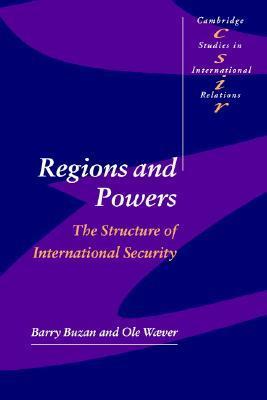What do you think?
Rate this book


598 pages, Paperback
First published January 1, 2003
» "Security" (or, more often, insecurity) could be thought of as an arrow pointing from one state to another which it considered an ally or enemy.• To the surprise of many, that nasty cold war came to an end. That meant that the single remaining superpower had much less reason to meddle in the affairs of other states (hah!), since it no longer needed to fight proxy wars. And that meant that regional and local security issues suddenly became much more interesting.
» States will tend to have these relationships much more often with states they are neighbors with.
» If you draw all these arrows on a map, they will form "patterns of amity and enmity", which in turn trace out regional "security complexes".